Construction of binary telescope
Telescope optics
Two low-cost, pyrex, parabolic
mirrors were purchased for the
telescope. They are 410 mm in diameter and have similar focal
lengths of
1810 mm (F/D=4.5). Such parameters give us, in a newtonian focus,
a star
image with an average FWHM equal to 3 pixels (27 um) of the SBIG
ST-7 CCD
camera. This also nicely fits a 50 um diameter of our echelle
spectrograph fiber optic cables. These 0.4 m mirrors will be used to
test the telescope as two new, 0.5 m, F/4.5 parabolic mirrors are
currently being produced for us.
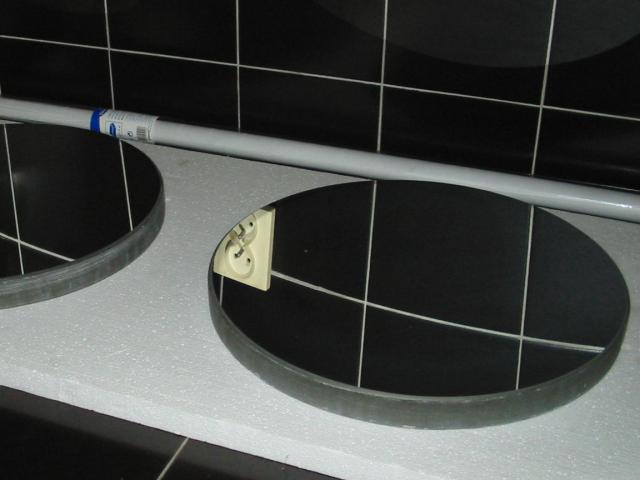
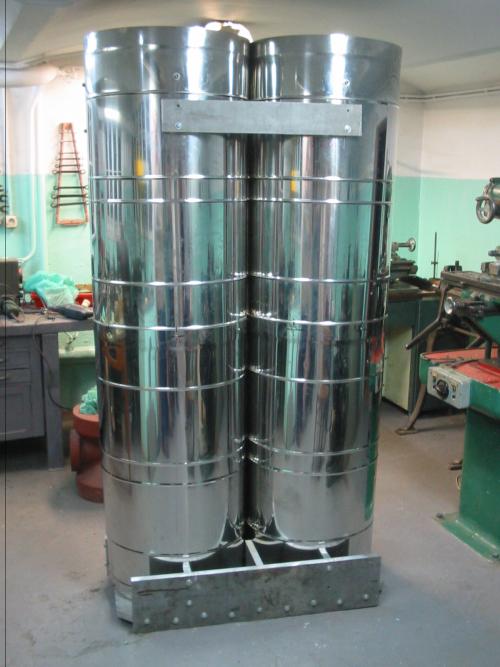
Both parabolic mirrors will be placed on a single mount, thus the name binary telescope. A photo shows two 2m long tubes for the telescope. On top of one of the tubes one can also see two four-arms supports for secondary mirrors.
Two flat, secondary mirrors mounted at the ends of
steel tubes will direct light to two CCD cameras, each equipped with a
different filter.This setup will make it possible to do simultaneous photometry
in two colours. Furthermore it can be modified to feed light of a single star to
two fiber cables of the echelle spectrograph. This will produce two interleaved
spectra which can be added during reduction. Finally, one mirror can work in
photometric mode while the other can be used for spectroscopy.
The mount
For the mount we use part of the Zeiss SBG Satellite camera. It was used in 1970's for automatic, photographic observations of the artificial Earth satellites. It has 4 degrees of freedom so we will utilise only its upper part, consisting of a fork and a box it is conected to. Two vertical piers and a circular stand are unnecesary and will be removed. This way the mount will be shorter and its weight will be reduced to about 1500 kg.
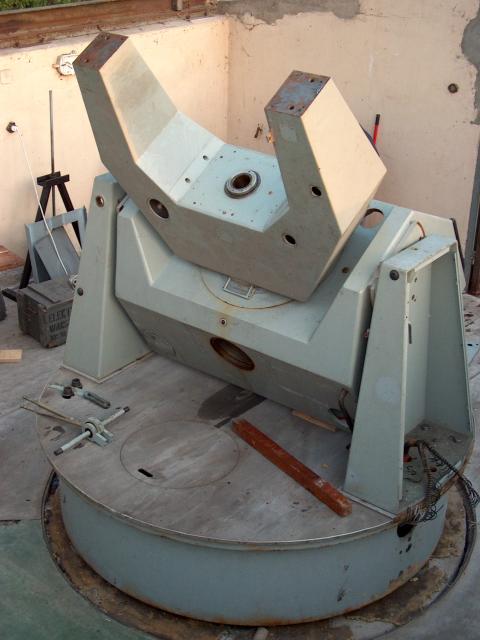
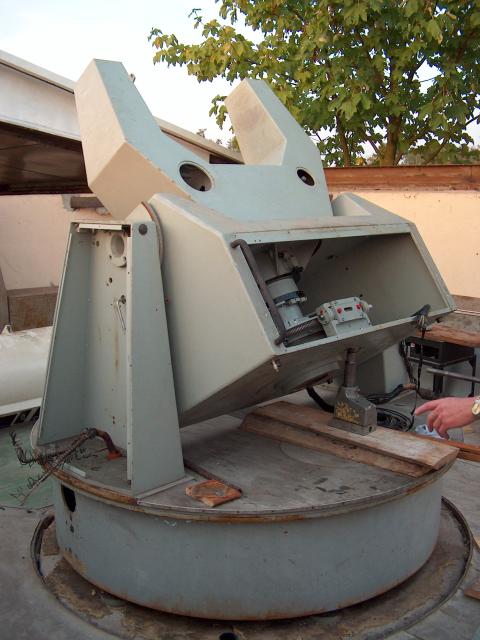
The SBG mount has an excellent drive gear (shown below), which is important for accurate pointing. Similar gear (taken from another Zeiss telescope) will be added for the declination axis, to be inserted at the end of the fork. Powerful motors with optical encoders will make it possible to point the telescope to any location in the sky in less than half a minute with the expected accuracy better than 15 arc seconds.
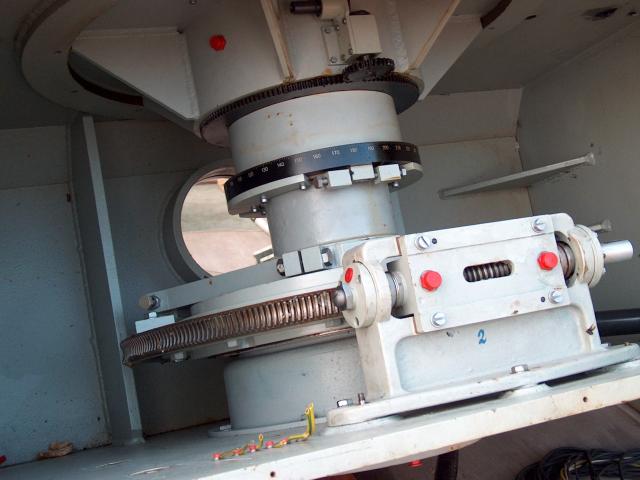
Driving system
For fast slewing we will use powerful motors (two
black boxes with yellow axes), controlled by industrial type Eurotherm
drives (two blue boxes above the computer). These drives contain
microprocessors, which can be pre-programmed with quite complex
subroutines,
which simplifies the program needed to move the telescope.
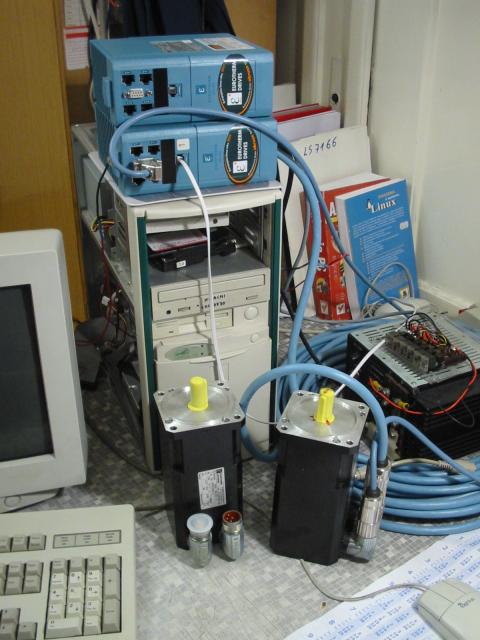
Such devices are usually controlled by programs
running on real-time operating systems. At the moment we are developing
it on a standard GNU/Linux platform with an option to switch to
the RT Linux if any problems arise.